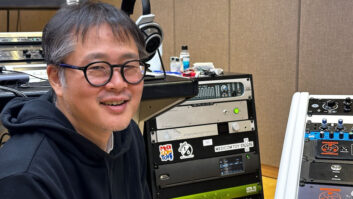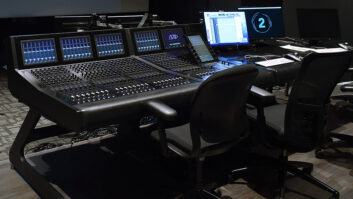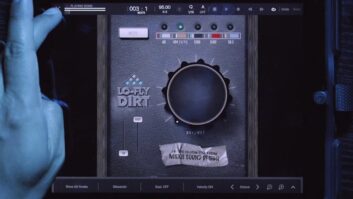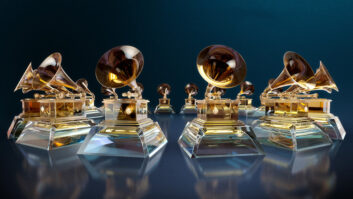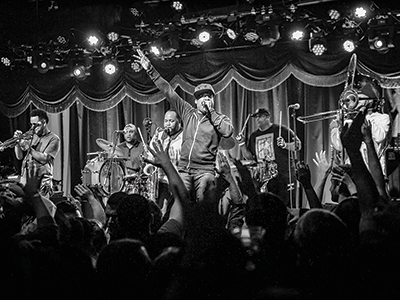
Engineer Andrew “Goat” Gilchrist has toured with the Soul Rebels on and off for nearly ten years, balancing their dates with regular work for sax great Maceo Parker, UK reggae group Steel Pulse and others. He says that, on their own, this powerhouse brass ensemble—two trumpets, two trombones, a sax, sousaphone, and two drummers—”barely require sound reinforcement.” But at the moment, the Soul Rebels are touring clubs and theaters with hip-hop vocalist Talib Kweli. So the job for Gilchrist is to make sure the words rise above the brass.
There’s a lot of spontaneity to these shows as well; any of the horn players might take a vocal line, so Gilchrist sets up six Shure SM58s. “Clarity, simplicity, and directness are pretty much my bottom line,” he says. “The real trick with the Soul Rebels is keeping my eyes glued to the stage, to see who is going to jump on a vocal mic and make sure they are being heard, because six wide-open vocal mics next to all those horn and percussion mics can get real messy real fast.
“As an experienced MC, Talib is very much in control and on top of his mic, and once he is set up, very little messing with his channel that needs to happen during the show. The other important thing with this band, is understanding that even though it might appear to be a ‘hip hop’ show, that the basis of the Soul Rebels sound comes from a very honest, acoustic place.
In keeping with that “honest” foundation, Gilchrist keeps things simple, technically and sonically: “Their whole setup is the most dependable, most easily available, and most foolproof touring rig imaginable: the six vocal mics, an SM57 on whichever horns are using wired mics, a 57 for the snare and timbale, and a Beta 52 for the bass drum,” Gilchrist says.
“On this run of shows, Talib is also using a Shure wireless setup, to give him real freedom of movement onstage. With the Soul Rebels, so much of the character, and spirit of their music is coming from that acoustic, brass and drums sound, that, as a sound engineer, the best tactic is to put up those mics, get the balance right, and stay the hell out of the way!

“With this band, there is no need for extra effects in the mix,” Gilchrist continues. “A lot of the time, in a fairly dead club packed to the walls with people, I will add a little bit of tight slap delay to Talib’s vocal, just to liven it up a bit. But really, the sound and the dynamics of Soul Rebels really comes straight from the stage.
“The only little trick piece of gear that I carry with me is a Radial Engineering SB-48UB, which is a little box that splits the signal of the mic that is dropped into the bell of the sousaphone into an XLR balanced out for me at FOH, and a 1/4-inch amp level-unbalanced out that goes to a bass amp onstage; that is pretty much the sousaphone player’s monitor. If I want to, I can mike the bass amp and blend a little crunch into the clean sousaphone sound that is coming off that mic, but most of the time, with this band, especially in a club, there is enough crunch to go around, without me adding any more.”
